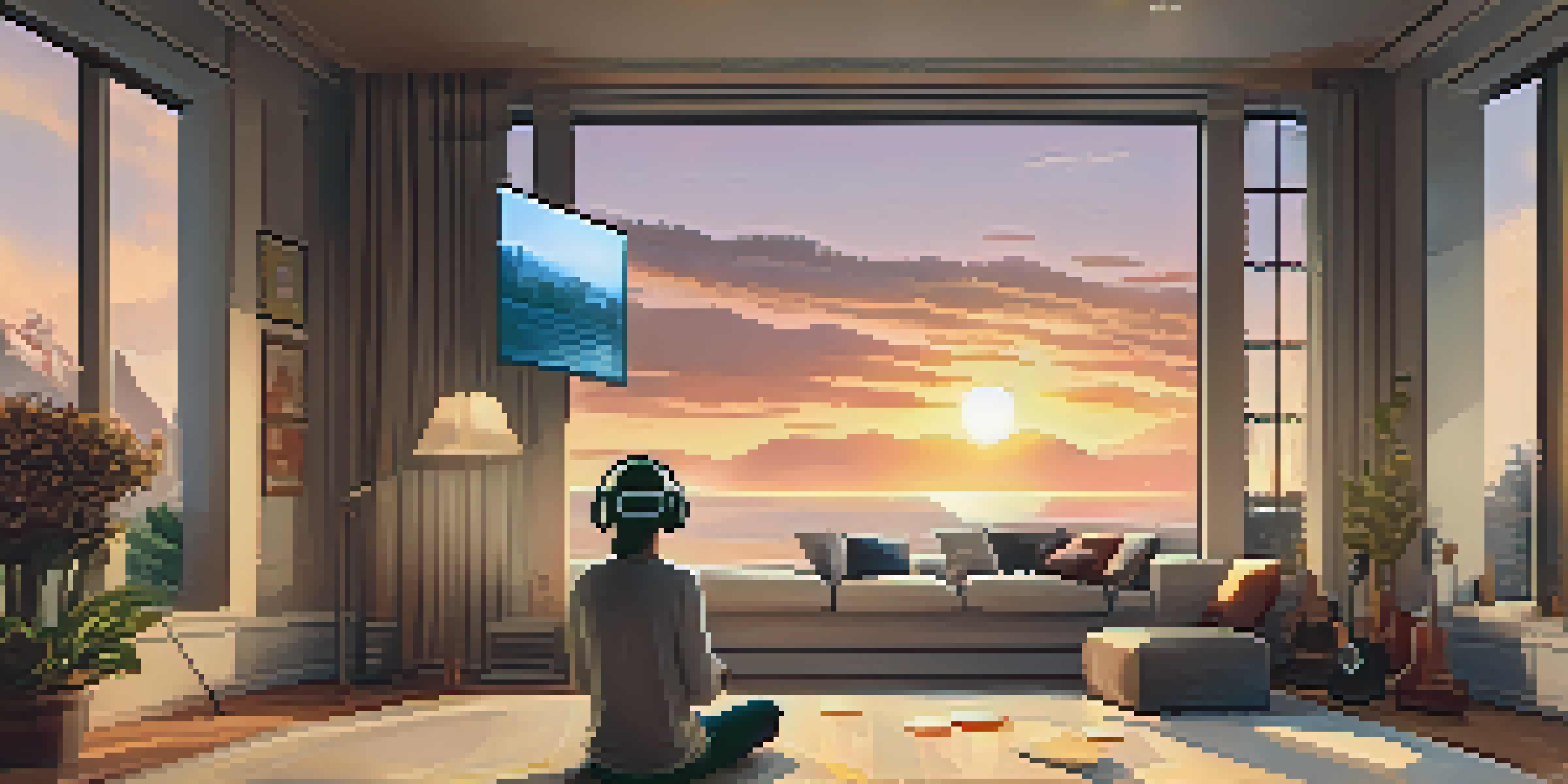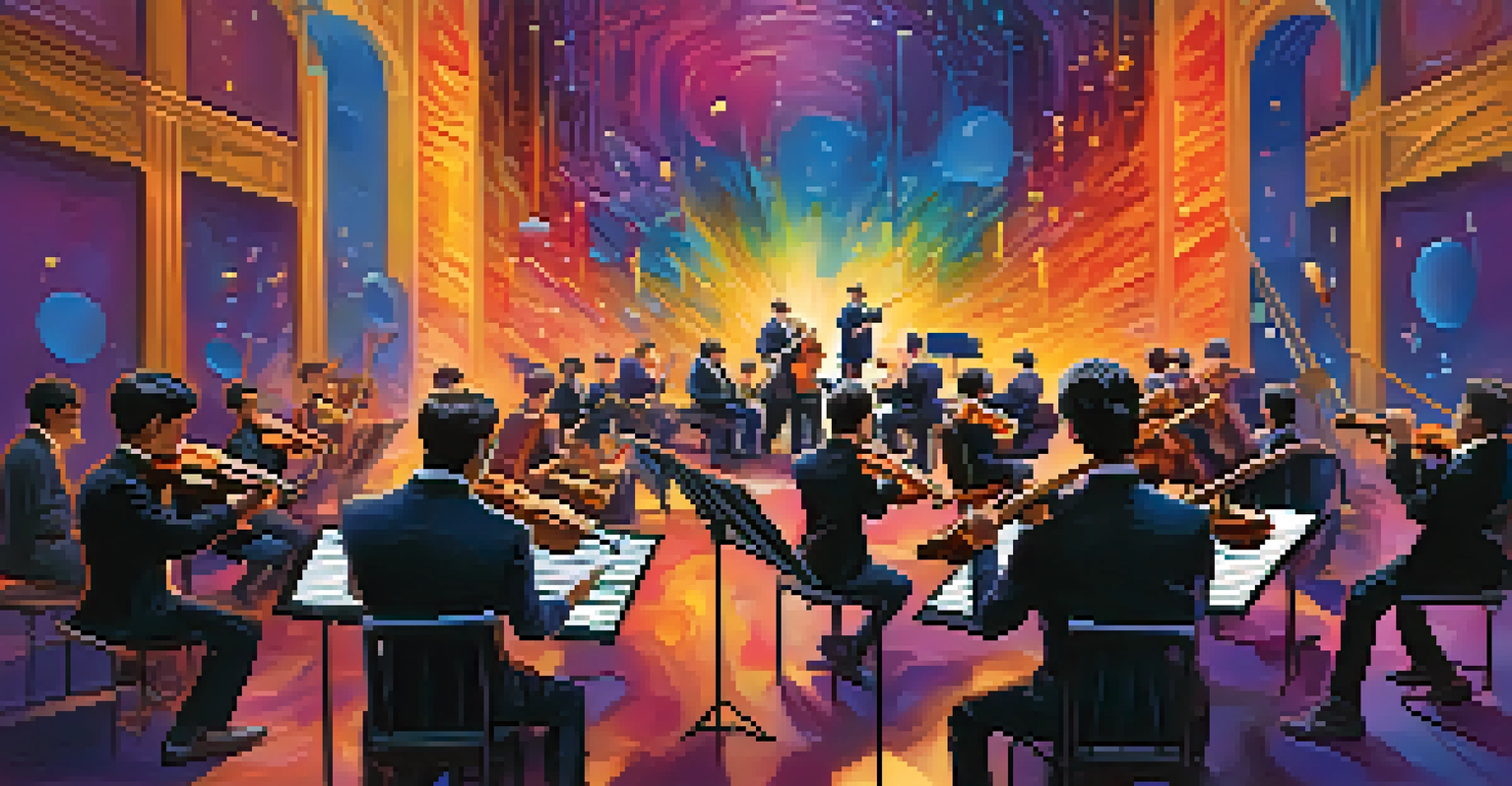Virtual Reality: Transforming Classical Music Performances

Understanding Virtual Reality and Its Impact
Virtual reality (VR) immerses users in a computer-generated environment, allowing for experiences that feel real. This technology has evolved significantly, moving beyond gaming into diverse fields such as education, healthcare, and now, the performing arts. With VR, audiences can experience classical music performances like never before, breaking down geographical barriers and enhancing engagement.
Virtual reality is becoming an increasingly important tool for artists and educators, allowing them to engage with their audiences in new and exciting ways.
Imagine attending a live symphony performance while sitting in your living room. VR can transport you to the grandest concert halls, letting you feel as if you’re truly there. This not only makes classical music more accessible but also introduces a new level of intimacy, allowing viewers to connect with the music and musicians in a unique way.
As VR technology continues to improve, its potential to transform classical music performances grows. Musicians and composers are beginning to explore innovative ways to present their work, engaging audiences in ways previously thought impossible. This evolution represents an exciting intersection of tradition and technology.
Enhancing Audience Engagement Through VR
One of the most significant advantages of VR in classical music is its ability to enhance audience engagement. Traditional concerts can sometimes feel distant, but with VR, viewers can immerse themselves in the performance. They can choose their vantage point, whether it's on stage with the musicians or in the audience, creating a personalized experience.

This level of interactivity can deepen emotional connections to the music. For instance, a viewer might feel the rush of energy from the orchestra or the subtle nuances of a solo performance, making the experience more memorable. When audiences can engage on such a personal level, it fosters a greater appreciation for classical music.
VR Enhances Engagement in Music
Virtual reality transforms classical music performances by allowing audiences to immerse themselves and interact with the music on a personal level.
Moreover, VR can facilitate live Q&A sessions with artists after performances, allowing audiences to interact with musicians directly. This two-way communication can demystify the process of creating classical music, making it more relatable and approachable.
Breaking Geographical Barriers in Music Access
Virtual reality can democratize access to classical music by breaking down geographical barriers. People from remote locations or those unable to travel can now experience world-class performances from the comfort of their homes. This is particularly beneficial for individuals with mobility issues or those living in areas without access to live music venues.
The future of classical music lies in its ability to adapt and embrace new technologies, ensuring its relevance in a rapidly changing world.
For example, a viewer in a small town can enjoy a performance by the Berlin Philharmonic without the need for expensive travel or tickets. This accessibility can lead to a broader appreciation of classical music, as more people are introduced to its beauty and complexity. It opens doors to a global audience, creating a more inclusive music community.
Additionally, VR can offer curated experiences that highlight the history and context behind the music, enriching the audience's understanding. By integrating educational elements, VR can transform a simple concert into an engaging learning experience.
Creating Immersive Visual Experiences
In addition to audio, VR can create stunning visual experiences that complement classical music performances. Imagine watching a symphony where the visuals sync with the music, enhancing the emotional impact of each note. This multi-sensory approach can captivate audiences and heighten their overall experience.
Artists can collaborate with visual designers to create enchanting backdrops that evolve with the performance. These visuals can range from abstract art to stunning representations of the music's themes, providing a feast for the eyes as well as the ears. This kind of immersion can make the performance feel like a journey, transporting the audience through different emotional landscapes.
Breaking Barriers to Music Access
VR democratizes access to classical music, enabling people from remote locations to enjoy world-class performances from their homes.
Furthermore, the ability to manipulate the visual elements in real-time can lead to unique performances where no two shows are alike. This unpredictability can create excitement and draw audiences back for more, as they anticipate the next visually stunning interpretation.
The Role of Technology in Music Education
VR technology is not just transforming performances; it’s also revolutionizing music education. Students can learn about classical music in a dynamic and engaging way, using VR headsets to explore the intricacies of orchestration and composition. This immersive approach can make complex concepts easier to grasp.
Imagine a student being able to virtually step inside an orchestra, observing how each instrument contributes to the overall sound. This hands-on experience can deepen their understanding and spark a passion for music that traditional methods might not inspire. It can also encourage creativity, allowing students to experiment with their compositions in a virtual space.
Moreover, VR can facilitate remote learning, allowing students from different parts of the world to collaborate on projects. This fosters a sense of community and collaboration, nurturing a new generation of musicians who are comfortable with technology and open to innovative ideas.
Challenges and Limitations of VR in Classical Music
While the prospects of VR in classical music are exciting, there are challenges and limitations to consider. High-quality VR experiences require advanced technology and equipment, which may not be accessible to everyone. Additionally, creating engaging VR content can be costly and time-consuming for artists and institutions.
Moreover, some may argue that VR lacks the authentic atmosphere of a live concert. The energy of a full audience and the acoustics of a concert hall contribute to the magic of a performance. It’s essential to find a balance between the immersive experience of VR and the unique aspects of live music that make it special.
VR Revolutionizes Music Education
By using VR, students can explore music composition and orchestration in an immersive way, fostering creativity and collaboration.
As the technology develops, it will be crucial to address these challenges to ensure that VR can complement rather than replace the traditional concert experience. By doing so, the classical music community can embrace innovation while honoring its rich heritage.
The Future of Classical Music in Virtual Reality
Looking ahead, the future of classical music in virtual reality is full of promise. As technology continues to advance, we can expect even more immersive and interactive experiences that captivate audiences. Artists and organizations are likely to explore new formats and creative collaborations that push the boundaries of what is possible.
Moreover, the integration of VR into festivals and events could become commonplace, allowing audiences worldwide to participate in real-time. Imagine a global classical music festival where everyone can experience live performances and workshops, breaking down barriers of distance and cost.

Ultimately, the marriage of classical music and virtual reality represents a thrilling evolution of the art form. By embracing this technology, the classical music community can continue to thrive and resonate with future generations, ensuring that its beauty endures.